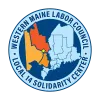Our Hall
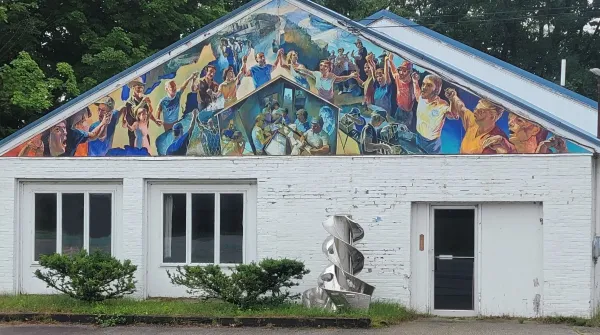
Our Hall
The WMLC Local 14 Solidarity Center Union Hall
The building started out as a tv repair shop, then a convenience store, then a Chinese restaurant which didn’t last very long. The small building was expanded during the strike. You can donate to support the ongoing restoration of the hall, or join us on Tuesday mornings to help with the work.
Be part of history!
DONATE HERE
to support continued restoration of the hall
Linda Deane’s story of the hall:
I worked 10 years at the Androscoggin Mill in Jay before the Strike of ’87. The strike ended in Oct of 1988, and I went to work at the Rumford paper mill in Jan 1989.
For 32 years I drove the 59-mile round trip to work, passing the hall each way, and reflecting each time on the strong sense of solidarity that defined the strike days, and what would happen to the mural, and memorabilia inside.
The mural that spans the top of the building tells the story of the strike, the most prominent and meaningful part to me being the people holding raised hands, symbolizing solidarity, and representing the Mass Meetings that filled the high school gym to capacity every Wednesday for 16 months.
We were inspired by politicians, activists, and each other to stay strong. Only100 out of 1250 strikers crossed the picket line.
At the end of each meeting, we stood, held our hands high, swayed back and forth, and sang Solidarity Forever, the singing of which is still emotional for me today.
Even after the strike ended and Local 14 was decertified, the hall was not idle. It became a gathering place for the ex-strikers, with 30-50 people meeting daily to play pool, cribbage, and engage in discussions. Over time, attendance dwindled due to illness and the loss of many members, but even now – almost 40 years later - about a dozen retirees still meet every morning for coffee. To keep the hall open and pay for utilities and taxes, they made weekly donations, referred to as "union dues," with the retirees today still continuing this tradition.
After retiring, I joined them for coffee and learned that they were struggling with property taxes and worried about the future of the hall.
Walking into the hall felt like stepping into a time capsule. It looked exactly as it had the day the strike ended but with dust covering everything that had gone untouched for decades. That moment sparked my vision to preserve the hall and transform it into a labor history education center. Since Labor Councils don’t pay property taxes in Maine, I suggested they sell the hall to the Western Maine Labor Council, which I serve as president.
The retirees agreed to sell the building and its contents to the WMLC for $1.00, with the understanding they could continue meeting for their morning coffee. I presented the idea to the Council, and December 21, 2023, the WMLC became the second Labor Council in Maine to own its own building.
This is a picture of the meeting room when the WMLC purchased it.
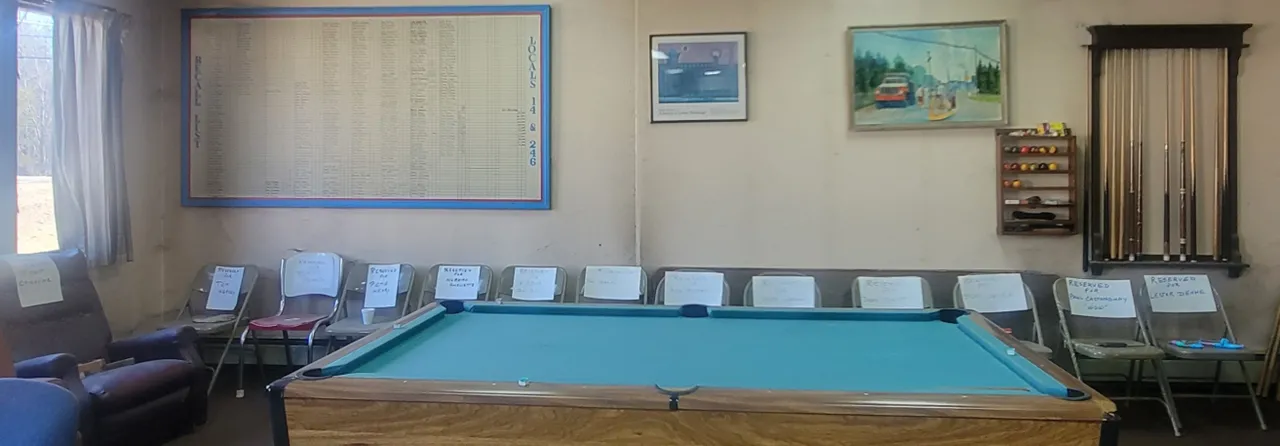
As members passed, those who remained honored them by placing their names and a personal memento on their favorite chair. The Council plans on creating a memorial plaque to honor these individuals and the dedicated groups of retirees who still gather daily.
This is a close-up of the recall list, for members who had been replaced by strike-breakers to be offered to go back to work as openings occurred in the mill, with the last recall occurring in 2003.
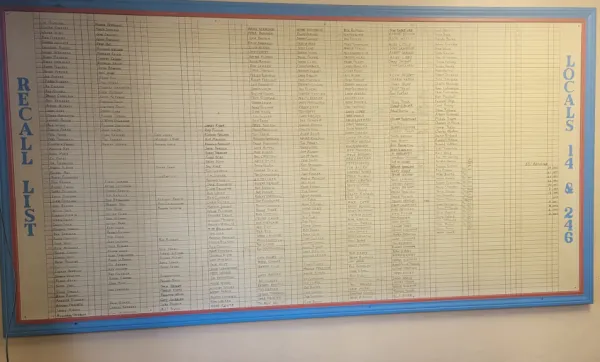
This mural, which hangs on the wall inside, was painted by Brother Raymond Henry and features a maple tree symbolizing solidarity and strength.
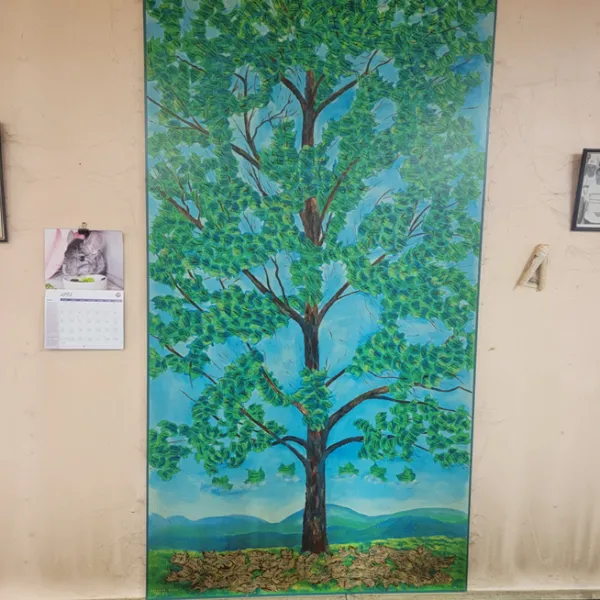
The vision for the mural came from brother Roland Sampson, who shared a dream he had of the tree with the green leaves representing the strikers who stayed strong, with the 100 brown leaves representing the scabs who crossed the picket line.
Inspired by Roland’s story, Raymond brought this vision to life, preserving the dream for all to see. Each leaf bears the name of a striker or scab, with six leaves on the clouds representing those who passed away during the strike.
July 2024 the Local 14 Solidarity Center attained 501(c)(3) status. (The Labor Council is a 501(c)(5))
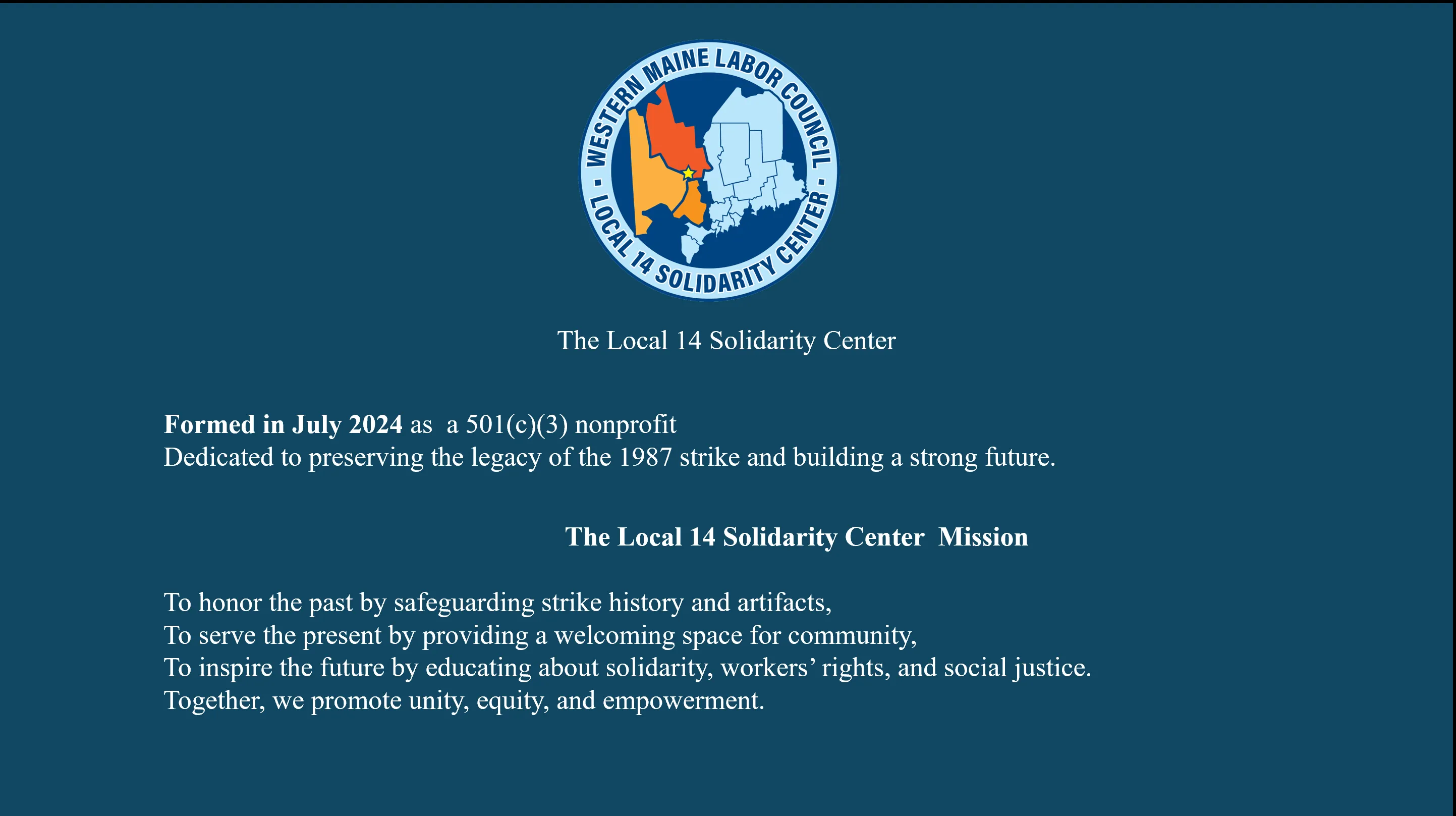
Our first big donation was an agitator from the repulper, known as the "Blue Goose," which came from the now-demolished Otis Mill, a 100-year-old mill located on the Jay-Livermore Falls line, which had closed in 2009.
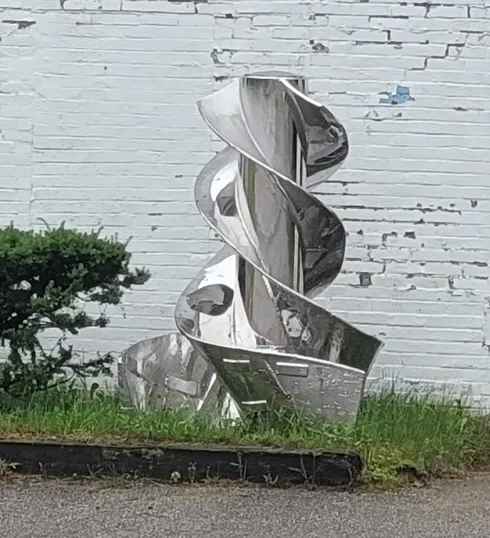
This piece was generously donated by Clarks Riverside Scrap, the company that demolished the mill.
And here is a picture of the Blue Goose itself.
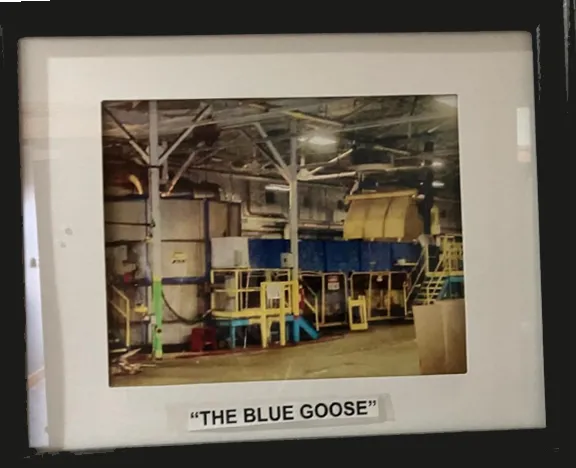
The agitator will serve as a worker memorial monument, honoring not only those who lost their lives on the job but also those who dedicated their lives to working in now closed Jay and Livermore Falls paper mills.
Another big donation came later in 2024 when the Otis Federal Credit Union made a substantial contribution toward the renovation. The Credit Union was originally formed in 1954 by 11 mill workers who wanted to make a difference in their community.
[photo to come]
In November 2024, a dedicated crew of WMLC members, friends, and University of Maine graduate students worked on cleaning and archiving. Even though the front room had remained in constant use, the back rooms were a time capsule from the strike – files, signs, t-shirts, notebooks, along with outdated copying equipment and so much more. The crew completed 10 dump runs but – more importantly - archived 10 boxes of valuable information, which were cataloged and sent to the Fogler Library at the University of Maine in Orono.
At the time of this writing (July, 2025), another archiving day is planned to tackle the documents stored in the upstairs offices.
On March 15 of 2025, IBEW Local 567 apprentices, along with their instructor, and Laborers Local 327 members came together for a productive workday. The IBEW team installed new LED lights, added outlets, and set up heat pump hookups, generously donated by the Plumbers and Pipefitters Union. At the same time, the members of the Laborers Union Local 327 began the bathroom remodel.
[photos to come]
A week later, the IBEW 567 apprentices returned to finish the work, and in another show of solidarity, they also donated the materials for these improvements, further supporting our efforts to enhance the space.
[photo to come]
On July 1, the Solidarity Center was buzzing with energy as students from the Union Construction Academy pre-apprenticeship program, staff from the Maine AFL-CIO, and Scontras Center Director Matt Emmick came together for a productive workday.
[photo to come]
The above collage shows some of the work completed by the crew during their time at the Solidarity Center.
Whenever there is a group working at the hall, Peter and I give a history lesson about the hall and the strike during coffee and lunch breaks. This helps everyone stay connected to the past as we move forward with these improvements. Many of the retirees join us, sharing first-hand stories about their work in the mills and their experiences during the strike.
[Photo to come}
This is the main meeting room, showing recent updates, including the addition of a kitchenette, fresh paint, and new ceiling tiles.
[Photo to come]
Repairing and restoring the mural
Following recommendations from Dan Wood, a restoration expert from the Strawberry Bank Museum in Portsmouth, NH, the first piece of the mural was removed to begin the restoration process.
After nearly 4 decades facing the elements, the mural that has inspired generations was in urgent need of restoration. It is more than paint on a wall –it’s the story of struggle unity and pride.
As of this writing, the mural is safely displayed inside the hall, and a high resolution digital copy has been sent to Signworks in Farmington (Maine) who will create a weatherproof replica that will go where the original was on the outside of the building.
Among other things, contributions have already or will soon pay for:
- Epoxy repair and preservation of each panel
- Paint Touch up work by Artist Rob Shetterly
- High Resolution imaging and reproduction at the Osher Map Library USM
- Digital replica being produced at Sign Works in Farmington
- Installation of digital replica outside at the hall by volunteers
- Indoor Display of the original mural, protected for future generations
Together we can preserve this history and keep the spirit of solidarity alive.
Our first formal educational event at the hall was held on June 17th and was the Shrink, Shift Shaft workshop with Mike Prokosch.
The workshop was well attended by 27 participants, who were enthusiastic and eager for more.
[Photo to come]
We know that this was only the first of many labor and community gatherings, educational and organizing opportunities that will take place at the hall.
We have a newsletter called The Agitator to keep folks informed about what’s happening at the Local 14 Solidarity Center. Sign up on here to be added to our mailing list and receive it.
To contribute to the restoration and preservation of our historic union hall, you can
DONATE ONLINE OR BY CHECK
or come by on Tuesday mornings to help with the work
